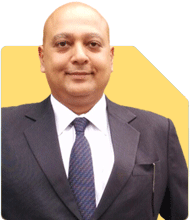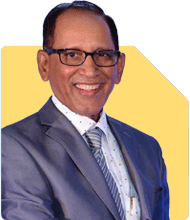Sushil Sukhwani | Answer |Ask -Follow
Study Abroad Expert - Answered on May 03, 2024

My son has MBBS degree from IUHS St. Kitts. Can he practice in USA.
First and foremost, thank you for getting in touch with us. I am happy to hear that your son has completed his MBBS degree and now wishes to practice in the USA. To answer your question first, I would like to tell you that a number of variables, including whether your son has completed the necessary licensing exams, viz., the United States Medical Licensing Examination (USMLE), and if he fulfills the prerequisites put forth by the relevant medical licensing authorities in the state where he wishes to practice, play a key role in deciding his eligibility to practice medicine in the USA with an MBBS degree from IUHS St. Kitts. Moreover, in order to meet the standards of medical practice in the USA, your son may be required to undergo further training or residency programs. For particular guidance and steps to pursue licensure in the USA, I would recommend that your son conducts a study on and gets in touch with the relevant authorities or licensing boards.
For more information, you can visit our website.
You may like to see similar questions and answers below
Sushil Sukhwani | Answer |Ask -Follow
Study Abroad Expert - Answered on Apr 24, 2024
Sushil Sukhwani | Answer |Ask -Follow
Study Abroad Expert - Answered on Apr 25, 2024
Mayank Chandel |2576 Answers |Ask -Follow
IIT-JEE, NEET-UG, SAT, CLAT, CA, CS Exam Expert - Answered on May 05, 2024
Sushil Sukhwani | Answer |Ask -Follow
Study Abroad Expert - Answered on Apr 29, 2024
Ramalingam Kalirajan |10905 Answers |Ask -Follow
Mutual Funds, Financial Planning Expert - Answered on Dec 19, 2025
Ramalingam Kalirajan |10905 Answers |Ask -Follow
Mutual Funds, Financial Planning Expert - Answered on Dec 19, 2025
Ramalingam Kalirajan |10905 Answers |Ask -Follow
Mutual Funds, Financial Planning Expert - Answered on Dec 19, 2025
Radheshyam Zanwar |6751 Answers |Ask -Follow
MHT-CET, IIT-JEE, NEET-UG Expert - Answered on Dec 19, 2025
Radheshyam Zanwar |6751 Answers |Ask -Follow
MHT-CET, IIT-JEE, NEET-UG Expert - Answered on Dec 19, 2025
Samraat Jadhav |2514 Answers |Ask -Follow
Stock Market Expert - Answered on Dec 18, 2025
Reetika Sharma |432 Answers |Ask -Follow
Financial Planner, MF and Insurance Expert - Answered on Dec 18, 2025
Reetika Sharma |432 Answers |Ask -Follow
Financial Planner, MF and Insurance Expert - Answered on Dec 18, 2025
Reetika Sharma |432 Answers |Ask -Follow
Financial Planner, MF and Insurance Expert - Answered on Dec 18, 2025
Samraat Jadhav |2514 Answers |Ask -Follow
Stock Market Expert - Answered on Dec 18, 2025



























